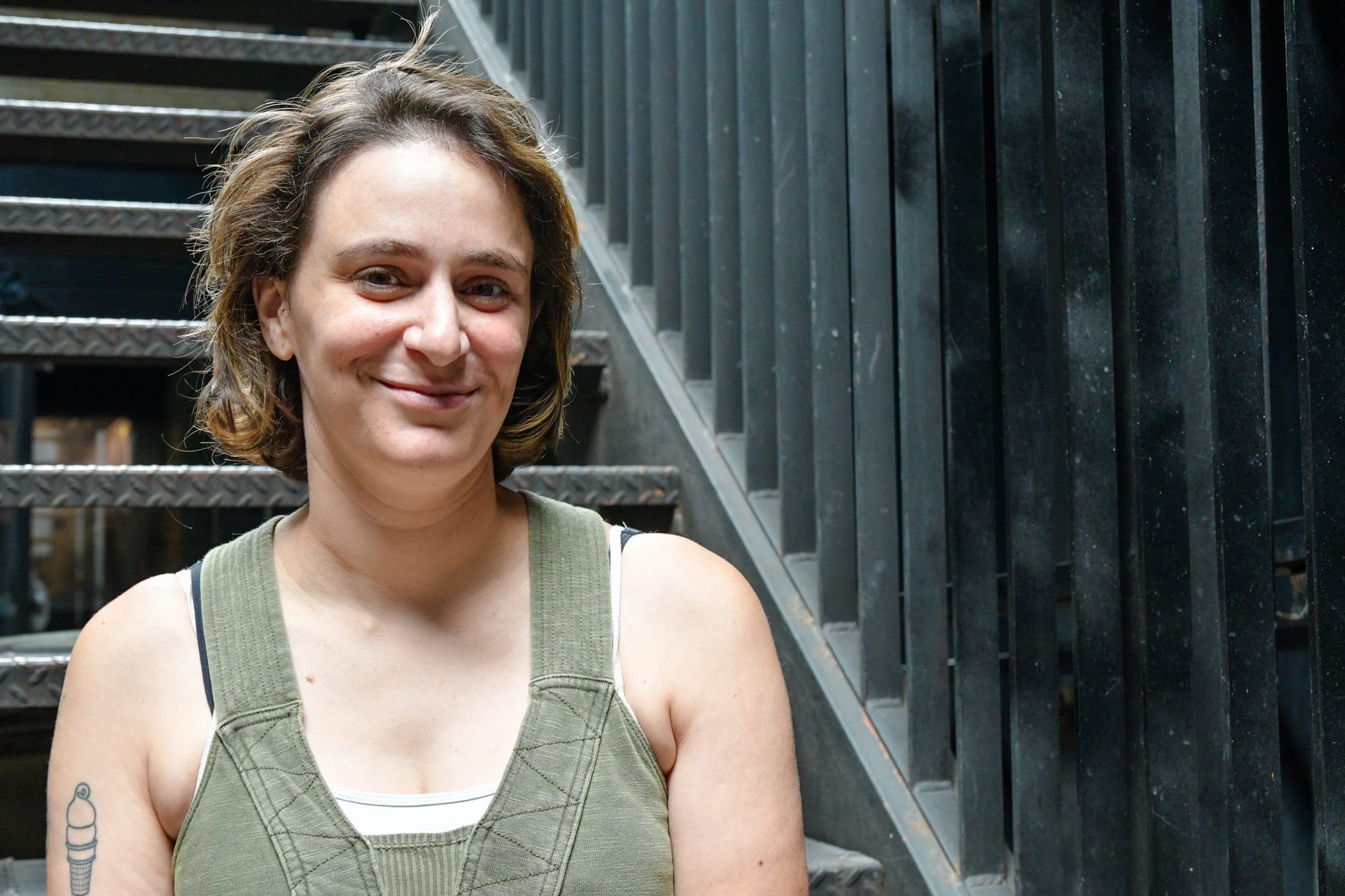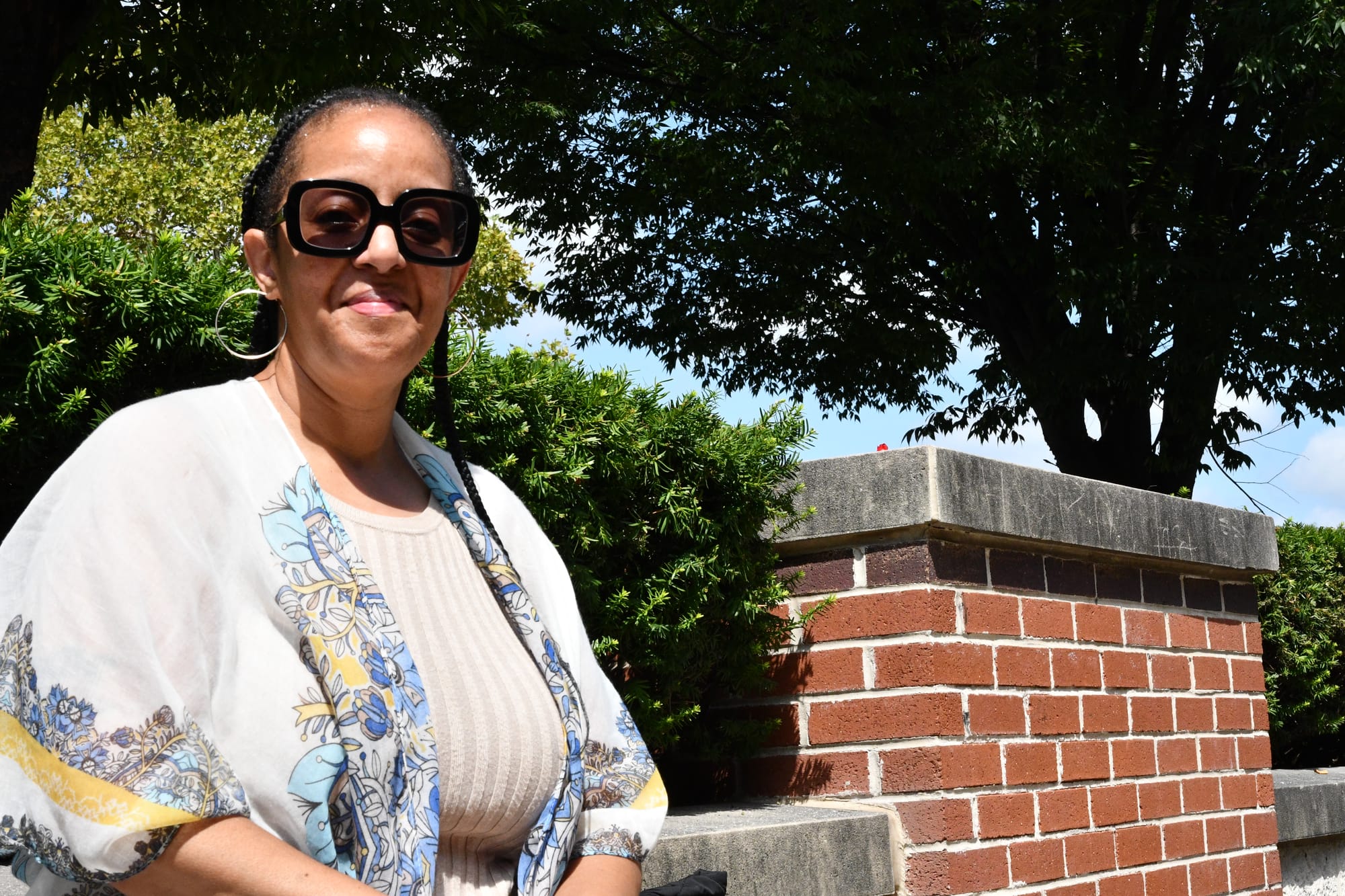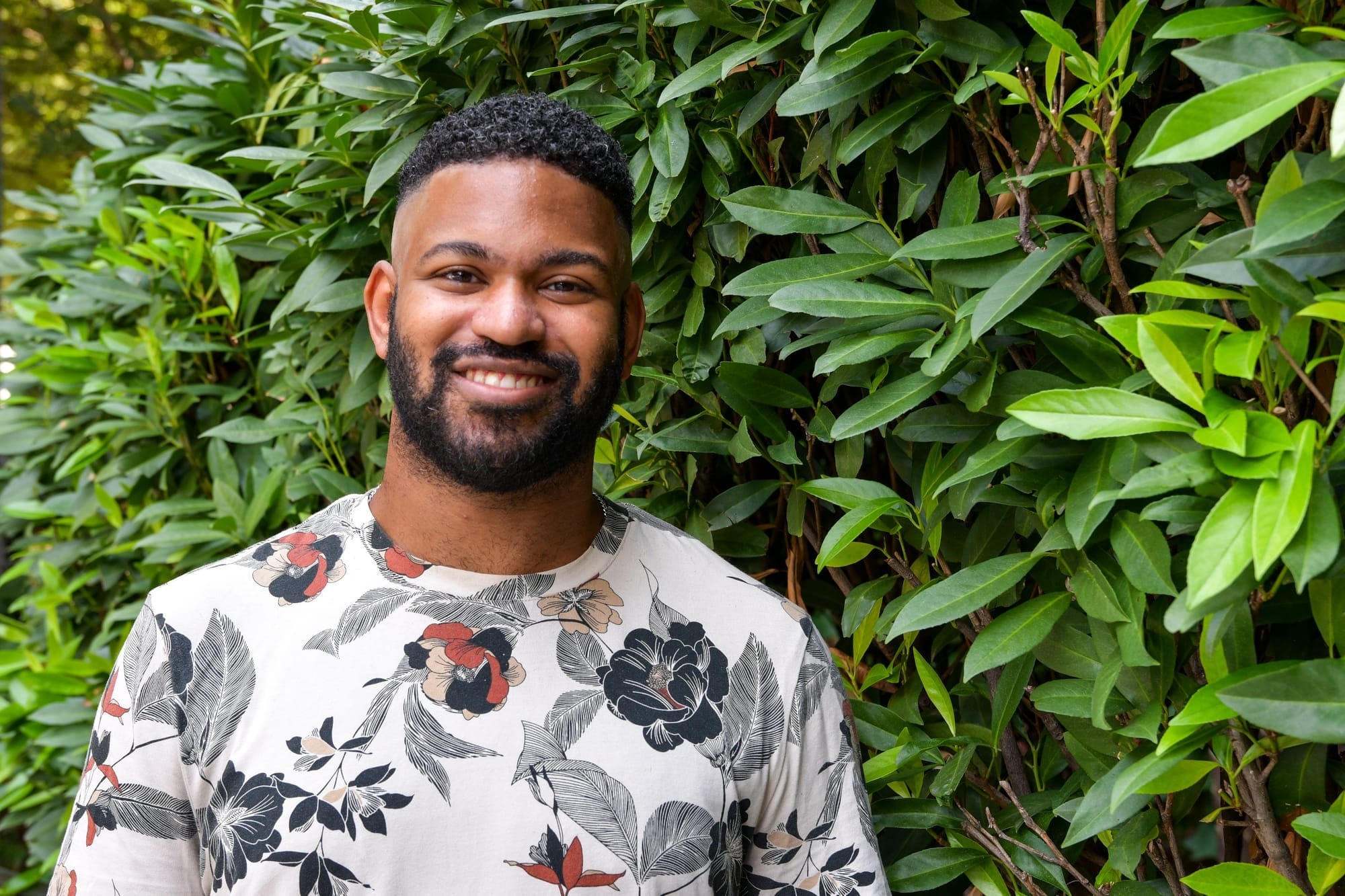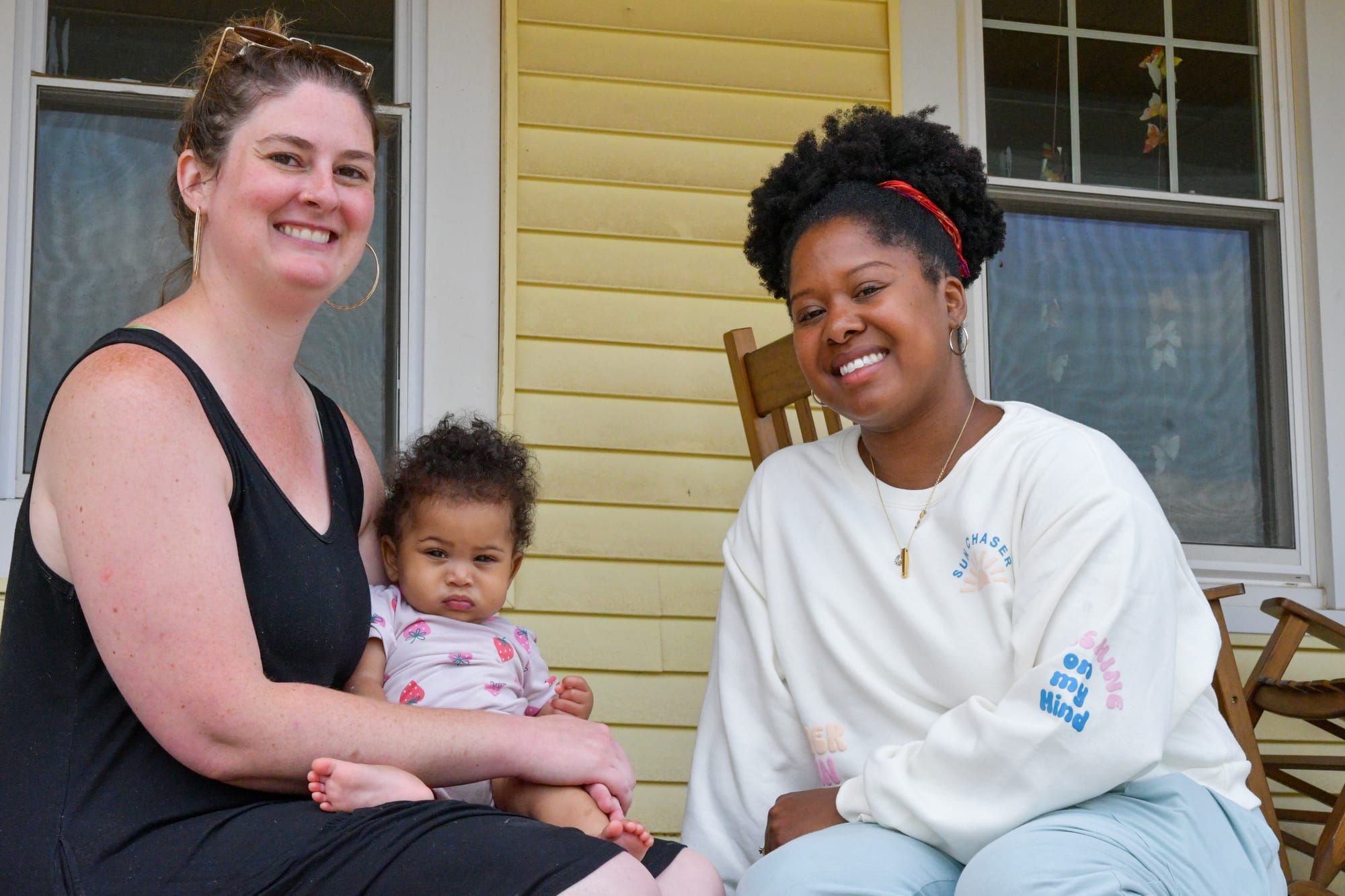Testing, truancy, and a takeover: What's weighing on D.C. teachers as school begins
Educators say burnout, testing, and resource gaps are persistent challenges — and now federal police are adding new fears to their communities.

Nearly five years after the pandemic upended classrooms, D.C. schools are starting to show glimmers of recovery. Reading and math scores have inched up, and the city’s latest budget puts more money toward student support, with new literacy programs, more behavioral health staff, and higher per-pupil spending.
The latest statewide test scores, released last week, show some progress: 37.6% of students met grade-level expectations in English and 26.4% did so in math — an overall increase of 3.6 percentage points from last year. But most students remain far below grade level in both subjects, a problem made worse by stubborn attendance issues.
When we spoke to teachers earlier this summer, they pointed to testing, absenteeism, burnout, and limited resources as among the biggest challenges in their classrooms.
Since then, the federal surge has added a new layer of uncertainty and unease, particularly among Black, immigrant and Hispanic communities. Teachers worry that fear is already compounding the problems they described, with families keeping kids home, students distracted in class, and attendance beginning to slip.
“There is a lot of uncertainty for the multilingual community in my school … Can I get my kid to school without being stopped by law enforcement? Is mom or dad going to be home when I get home?” said Elizabeth Weiss, a math and science instructional coach at Browne Education Campus in Ward 5. “A lot of the families in the neighborhood are afraid to walk to school with their kids. That’s going to affect attendance, and that’s going to affect learning.”

Meeting students' basic needs
While ICE’s director pledged that agents wouldn’t show up to school campuses on the first day, he didn’t rule it out in the future. And Zack Wilson, an English teacher at Columbia Heights Education Campus in Ward 1, said officers don’t need to step onto school grounds for the effect to be felt. He says he’s already seen attendance drop among his Hispanic students.“The attendance feels a lot like it did in January…after Trump became president,” Wilson told The 51st. “In general, we had more Latino students, immigrant students, not show up.”
And amid the president’s harsh rhetoric about youth crime, many Black students say they fear being targeted by law enforcement. Parents have given them new rules to follow, changed their commutes, and otherwise begun the school year on edge.
“I do think some students or staff have been fearful of coming to school as many already have trauma related to policing and public safety,” said Dallas Cherry, a science teacher at Maya Angelou Public Charter School in Ward 7.
Speaking at a news conference this week, Bowser acknowledged how families have been affected by the federal law enforcement presence.
“Parents who need to make adjustments are going to be making adjustments. And that’s a sad thing to say. Schools should be safe places,” she said. “We know that our schools are the safest places for our students. We invest a lot in their learning, and if they’re not at school, they can’t take advantage of that learning.”
Teachers pointed to many other ways that learning is often disrupted by what happens outside the classroom, including food insecurity, unstable housing, or worries about safety.
“We have kids coming to school from the shelter. It’s chaotic at home…maybe they didn’t have enough to eat over the weekend,” said Weiss.
At Ballou STAY High School in Ward 8, an alternative high school that serves older youth and adults working toward a diploma, many students are coming back after incarceration, raising children, or trying to get by without steady family support, according to reading specialist Angelique Diggs. “We have a lot of non-academic issues that we deal with, but they’re very necessary issues that we have to address in order for our students to access the school,” she said.

At schools across the city, teachers often step in to fill in the gaps.
“My principal buys winter coats for the kids who need it out of her own money…we have Safeway gift cards that we give out when somebody comes in and says, ‘I’m hungry,’” said Weiss. “Our social safety net is shrinking, and schools are going to make up the difference.”
City data shows that nearly six in ten D.C. public school students are considered “at-risk,” meaning they are experiencing homelessness, in foster care, or their families receive public assistance. Those students are more likely to miss class, score lower on standardized tests, and face other barriers to learning, which city officials often call the “achievement gap.”
Weiss, however, calls it an “opportunity gap,” rooted in unequal access to resources. “We’re expecting our schools that serve mostly Black and brown kids to do more with less, and it’s been that way for decades,” she said.The effects of those inequities show up most clearly in attendance. Midyear data from OSSE shows nearly 37% of students were chronically absent, up from about 30% before the pandemic (though attendance has improved since its nadir of 48% during the 2021-22 school year.) A Washington Post investigation earlier this year found that the city’s failure to curb rising truancy in middle and high schools helped fuel an increase in youth crime, with many kids entering the court system carrying long histories of poor attendance. Kids who miss school are likely to be both perpetrators and victims of crime, both of which can keep them out of the classroom.
Having to teach to the (many) test(s)
Nearly every teacher we spoke with also pointed to the District’s heavy focus on standardized tests as an ongoing frustration.
They said the hours spent on preparing for tests eats into class time and does not always reflect what their students actually know. Many said the constant cycle of test prep leaves students disengaged, particularly those with learning disabilities, language barriers, or other needs. And now, with stepped-up enforcement pulling even more attention away from the classroom, teachers worry those problems will only get worse. “It's immediately disrupting education,” Wilson said.
Annual testing starts in third grade with the city’s annual Comprehensive Assessment of Progress in Education (DC CAPE) exams (the state tests that replaced PARCC) in math and English, with science added in fifth grade, eighth grade, and high school biology. Most students also take the Measures of Academic Progress (MAP) Growth tests several times a year in reading, math, and eventually science. Interim exams like Achievement Network (ANet) and Illustrative Math add to the load, while English learners take the ACCESS for ELLs language test every year from kindergarten through 12th grade. By high school, college-readiness exams pile on top.
The data helps track progress and direct resources, but many teachers say the exams translate into weeks of lost class time and students tuning out.
At Center City Public Charter in Petworth, special education teacher Zellee Jones recalled a seventh grader with behavioral challenges who struggled to get through hours-long DC CAPE and MAP tests.
“Every kid wants to do well. Every kid wants to be told that they did okay,” she said. “But how can you tell them that when, throughout the testing, you’re constantly chastising them or asking them to wake up?”
She worries that the overemphasis on test prep leaves less time to work with students on class material or help those with special education plans meet their learning goals. Too often, she said, that means pulling kids during lunch or recess — something she’s reluctant to do — to keep them on track. “I remember being able to sit [with students] and really go over the reading…go over the work and discuss it, and then have them be able to participate in class.,” Jones said. “Now, I don't have the time.”
Wilson said the emphasis on testing doesn’t just sap time, it also reshapes what and how students get taught. He described the District’s literacy strategy as leaning heavily on vocabulary drills, while comprehension is measured through “arbitrary and subjective” multiple-choice questions.
Full-length novels have been replaced with short excerpts designed for test prep, a shift he feels leaves students less fluent and less engaged. “The kids stopped reading full-length books,” he said. “So the quality of our instruction went lower, but because test scores were like 5%, 10% better, it was justified.”

Cherry acknowledged the need for assessment but said traditional standardized tests are not accessible to all students. “Some of our students just are not really good testers at all,” he said. “I know a lot of adults who are not good testers, but you put them in another situation to showcase what they know or don’t know, they’ll outshine and do really well.”
Cherry said he sees value in preparing students for the tests they’ll face, but worries that “teaching to the test” takes time away from building deeper knowledge. He thinks schools would be better off focusing on test-taking strategies, critical thinking, and problem-solving skills that stick with students beyond one exam. Alternative approaches like projects, portfolios, or real-world assignments, he added, would give students more authentic ways to show what they’ve learned.
But for many teachers, moving in that direction feels out of reach because their evaluations and job security are tied directly to students’ scores, creating what some describe as a top-down pressure cooker that leaves little room for creativity or care.
“Every single week [at meetings with colleagues], it was test scores and only test scores,” said Wilson. “It wasn’t students’ lives, it wasn’t creativity. It wasn't what do they like to read? … It was always sort of helping us to figure out how to teach the test more effectively, how to interpret weekly classroom data to draw conclusions about the kid.”
Overtesting is one of the most common frustrations that Washington Teachers’ Union President Laura Fuchs hears across wards and grade levels. “The sheer amount of tests, the weight they have on people’s careers, and how repetitive so much of the testing is … it’s demoralizing for a lot of teachers,” she said.
Staffing instability and burnout
Even before the latest upheaval, educators said long hours, staffing gaps, and constant turnover were leaving many burned out and searching for more support. “There were times when I would go to sleep at almost 12 a.m. and then wake up at four or 5 a.m. to prepare for the next day. Unfortunately, there's so many things to do, task-wise, in a day that I'm not able to get to,” said Cherry, adding that his one prep period a day is simply not enough to plan, grade, and get everything else done. That kind of burnout is made worse when positions go unfilled and teachers are asked to cover for colleagues. Cherry said he’s often become the “whatever you need” person in his building, especially in STEM subjects where qualified staff are harder to find.
Teachers also pointed to constant leadership turnover as another source of instability that trickles down to classrooms. Jones said frequent changes in principals have made it hard to sustain programs like tutoring, after-school clubs, and wraparound services that support both staff and students. This year, her most recent principal is not returning, leaving her uncertain whether those initiatives will continue.
“We've had two principals every two years, and it's only with our recent principal where we've had some wraparound services,” Jones said. “I'm walking into the unknown this year because I'm not sure if those things that she put in place are going to continue this year."
That uncertainty, she added, piles onto already heavy workloads and little time for rest. She described colleagues being written up for taking short walks to manage stress or being denied even 10 minutes to themselves during the school day. “Sometimes you wait till the end of the day to go to the bathroom,” she said. “I've done it because just as soon as you get five minutes to walk away, there's a kid, another teacher, or an administrator or something else comes up.”
Experiences like these, Fuchs argues, contribute to burnout and turnover.
"People do not stay past five years in DCPS much anymore, let alone stay at one school,” she said. “They hop from school to school to school, trying to find a good one, and then after realizing the problem is systemic, they bounce.”
OSSE data shows teacher retention has improved modestly, with 84% staying in the profession last year, up from 82% the year before. About 76% remained at the same school. But retention was lower in schools serving more at-risk students, and early-career teachers and teachers of color were still more likely to leave. (OSSE did not respond to a request for comment.)
What increased support looks like depends on the teacher and the school. For Cherry, it means more time for planning, fewer back-to-back meetings, and professional development that helps him grow in the classroom. Jones pointed to leadership stability and dedicated wellness time. And for educators like Diggs, it is stronger wraparound services, so educators aren’t left trying to fill those gaps themselves.
Some teachers have taken matters into their own hands. In 2022, Zani Dalili-Ortique and her co-founder, Ebony Marshman, launched Riverseed, a Montessori-based public charter in Ward 7 serving grades pre-K through 5. The idea, Dalili-Ortique said, grew out of more than a decade of shared frustration working in under-resourced schools, focusing on “smaller classes, teacher autonomy, and individualized instruction.”
Celia Daughtridge joined the school later, after burning out in a larger, more traditional D.C. elementary school. The difference, she said, was immediate. “We see astounding outcomes — outcomes I’ve never experienced in my career,” she said. “I don’t think that at this point I could go back to a more traditional charter.”
But the city’s fiscal 2026 per-pupil formula — $14,466 for DCPS students and $12,755 for charter students — falls short of covering the true cost of specialized staff, bilingual materials, and embedded therapies that schools like Riverseed consider essential. Dalili-Ortique said the funding model traps schools in a cycle: taking in more students brings in more dollars, but often means enrolling more high-needs children who require resources the school cannot fully provide.

While charter schools have more flexibility to seek grants and outside funding, Dalili-Ortique said the work falls on leaders who are already stretched thin, balancing board meetings, staffing logistics, and full days with students.
“You’re working with children all day, and you still have to do X, Y, and Z,” she said. “Even giving teachers one work-from-home day for their own mental health is a logistical puzzle.”
In the meantime, teachers’ first priority is making sure their students continue to come to school and have the support they need to stay there, especially at a time when communities are grappling with the added layer of fear and uncertainty created by the federal law enforcement presence. While the challenges are real, Weiss says the commitment of her colleagues gives her hope.
“If we can get the kids in the building, I think things are gonna be okay, because I've never worked with a more dedicated group of adults who are doing what's best for kids every day,” Weiss said. “As long as kids are coming to school and as long as teachers have enough support that they're not burning out, we can make things happen for our kids.”









